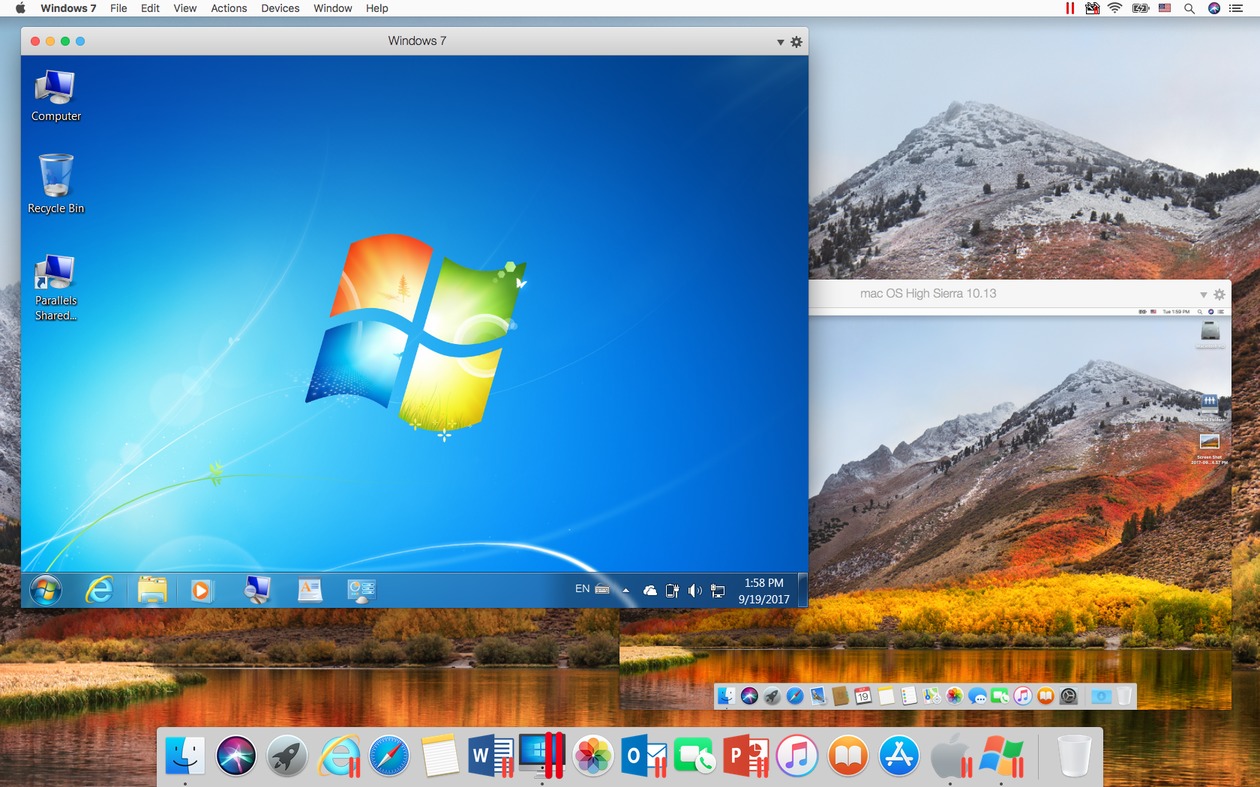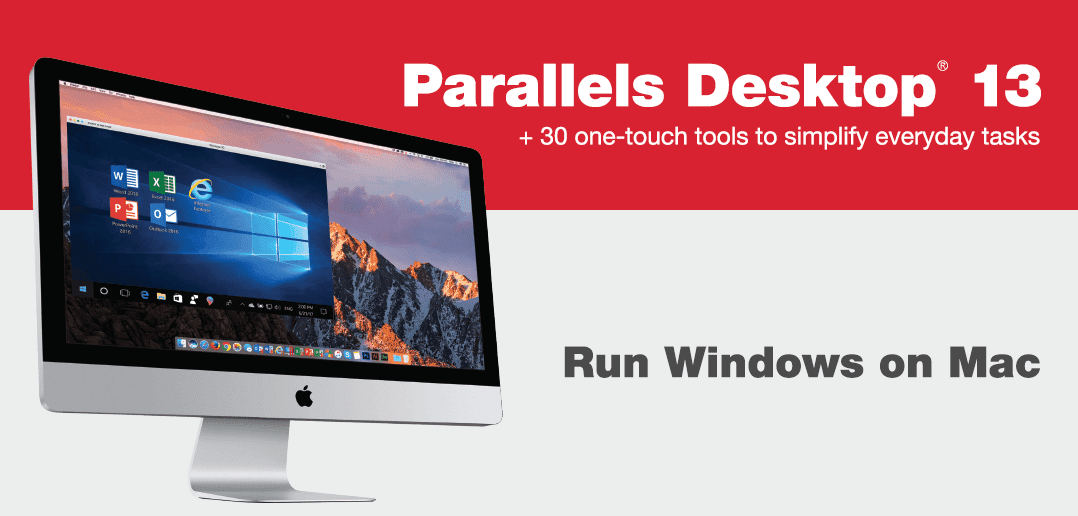High Sierra is finally available! If you are reading this post, then you probably want to know if Parallels Desktop® 13 for Mac supports macOS® High Sierra. The quick answer is yes! Parallels Desktop 13 fully supports macOS High Sierra, both as a host OS and guest OS. The more detailed answer is.
Symptoms
When I start Parallels Desktop for Mac on macOS High Sierra I get the following warning:
System Extension Blocked. A program tried to load a new system extension signed by 'Parallels International GmbH' and it was blocked. If you want to enable extensions from this developer, go to the Security & Privacy System Preferences pane.
- I am trying to press 'Allow' button but nothing happens.
Cause

macOS High Sierra 10.13 introduces a new feature that requires user approval before loading newly-installed third-party kernel extensions. Third-party kernel extensions (KEXTs) that were already present when upgrading to macOS High Sierra are granted automatic approval.
This approval UI is only present in the Security & Privacy preferences pane for 30 minutes after the alert. Until the user approves the KEXT, future load attempts will cause the approval UI to reappear but will not trigger another user alert.
For more information please refer to the Apple's official tech note: Technical Note TN2459.
Moreover, it's not possible to press Allow button if a connection to Mac established remotely due to security-related configuration of macOS to block any security related actions for remote connections.
Resolution
Before performing the instructions below quit Google Chrome application using its Dock context menu > Quit if it's running now.
Open System Preferences > Security & Privacy > General > click Allow next to the corresponding message:
If it's not possible to click Allow button or after clicking it nothing happens, ensure that the following recommendations are followed:
- Allow button is pressed locally. As mentioned above, due to macOS security limitations it's not possible to press Allowbutton (nothing will happen as a result of pressing it) remotely (any source of remote connection).
- No third-party input methods (keyboards, mouses, touch pads, graphics tablets) and their software are present at the moment Allow button is pressed.
Presence of third-party input methods and their software/drivers could possible cause the inability to press Allow button. Temporarily disconnect such devices from the Mac and remove their software/drivers.
It has been proven that only a presence of MagicPrefs preference pane render the Allow button unusable. Once Allow button is successfully used, macOS will store this record and it would be possible to continue using previously disconnected devices and install their software/drivers back.
Advanced solution
If pressing Allow button using the mouse doesn't give any positive results, use the steps described below:
- Open System Preferences > Security & Privacy > Keyboard > Shortcuts and switch Full Keyboard Access to All controls.
- Now open System Preferences > Security & Privacy > General.
- Press Tab key on the keyboard until the Allow button is highlighted, then hit Spacebaron the keyboard to press Allow button.
- Close System Preferences window and start Parallels Desktop.
Why Parallels Desktop needs its own kernel extensions?
To deliver all Parallels Desktop features, such as virtualization, USB and Network, Parallels Desktop loads the following kernel extensions to macOS:
com.parallels.kext.hypervisor - a proprietary core virtualization driver, which makes Parallels Desktop the best virtualization solution for Mac.
com.parallels.kext.vnic - Shared Network driver, which is used by a virtual router who manages all network services for a VM, such as gateway,DNS, DHCP, port forwarding, network conditioner etc.
com.parallels.kext.usbconnect - USB driver, loaded when a USB device connects to a virtual machine (VM). Supports all USB data transfer protocols except of isochronous transfer.
com.parallels.kext.netbridge - Bridged Network driver, creates a virtual network adapter on Mac to connect a VM to Mac's subnet directly.
- 8.1Excellent
Pros
- ✓Runs Windows and Linux VMs on Macs
- ✓Provides Touch Bar controls for Windows apps
- ✓Improved performance for USB/Thunderbolt storage devices
Cons
- ✕Business and Pro Editions require annual subscription
- ✕Virtual machines require large amounts of memory and storage
- ✕Poor documentation for first-time users
Parallels Desktop isn't the only virtualisation software that allows Mac users to run Windows apps within a virtual machine (VM), but its cycle of regular annual updates has allowed it to take a lead over rival tools, such as VMware's Fusion. The company normally releases updates to coincide with new versions of Apple's OS -- macOS, as it's now styled. However, the forthcoming High Sierra is still very much in its beta phase, so the developer has gone ahead and released Parallels Desktop 13 with a number of features that focus a little more on developments in Mac hardware instead.


Getting in touch
The biggest update to the Mac range recently was the introduction of the Touch Bar on the new MacBook Pro laptops, so Parallels Desktop 13 now allows the Touch Bar to display a number of tools and features from within Windows virtual machines. When launching a Windows VM, the Touch Bar on the MacBook starts by duplicating the Windows Task Bar, and displaying icons for pinned items such as Cortana or the File Explorer.
You can also use the Touch Bar to control Windows apps, just as you can with native Mac apps. Parallels Desktop 13 includes predefined Touch Bar controls for the Windows version of Microsoft Office, including Word, Excel, PowerPoint and Outlook, and there's a wizard tool built into the program that allows you to customise the Touch Bar to work with your favourite Windows apps.
Parallels Desktop 13 doesn't simply focus on the MacBook Pro, though.
Following the introduction of Thunderbolt 3 on recent Mac models, Parallels Desktop 13 has improved performance when using external drives via both Thunderbolt and USB interfaces.
Any Mac model can now view contact info from the People Bar -- a new Taskbar feature introduced in the latest Windows Insider Preview -- in the Mac's Dock bar, while a new Picture-In-Picture mode allows you to view live previews of multiple VMs running onscreen simultaneously. And, intriguingly, the company tells us that it's exploring the possibility of using external graphics upgrades, such as the Sonnet eGFX Breakaway Box, to enhance performance of virtual machines running high-end graphics apps such as the Windows-only Dialux software for lighting design.